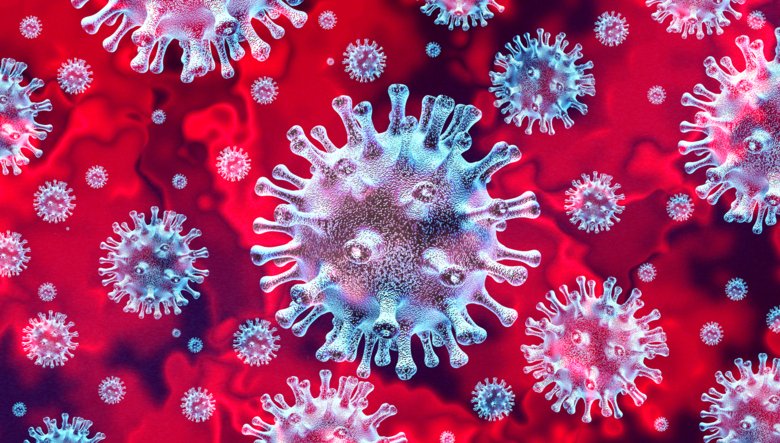Immunity to COVID-19 is probably higher than tests have shown

A new study from Karolinska Institutet and Karolinska University Hospital shows that many people with mild or asymptomatic COVID-19 demonstrate so-called T-cell-mediated immunity to the new coronavirus, even if they have not tested positively for antibodies. According to the researchers, this means that public immunity is probably higher than antibody tests suggest. The article has been published in the esteemed scientific journal Cell. [This news article has been updated]

“T cells are a type of white blood cells that are specialised in recognising virus-infected cells, and are an essential part of the immune system,” says Marcus Buggert, assistant professor at the Center for Infectious Medicine, Karolinska Institutet, and one of the paper’s main authors. “Advanced analyses have now enabled us to map in detail the T-cell response during and after a COVID-19 infection. Our results indicate that roughly twice as many people have developed T-cell immunity compared with those who we can detect antibodies in.”
In the present study, the researchers performed immunological analyses of samples from over 200 people, many of whom had mild or no symptoms of COVID-19. The study included inpatients at Karolinska University Hospital and other patients and their exposed asymptomatic family members who returned to Stockholm after holidaying in the Alps in March. Healthy blood donors who gave blood during 2020 and 2019 (control group) were also included.
T-cell immunity in asymptomatic individuals

Consultant Soo Aleman and her colleagues at Karolinska University Hospital’s infection clinic have monitored and tested patients and their families since the disease period.
“One interesting observation was that it wasn’t just individuals with verified COVID-19 who showed T-cell immunity but also many of their exposed asymptomatic family members,” says Soo Aleman. “Moreover, roughly 30 per cent of the blood donors who’d given blood in May 2020 had COVID-19-specific T cells, a figure that’s much higher than previous antibody tests have shown.”
The T-cell response was consistent with measurements taken after vaccination with approved vaccines for other viruses. Patients with severe COVID-19 often developed a strong T-cell response and an antibody response; in those with milder symptoms it was not always possible to detect an antibody response, but despite this many still showed a marked T-cell response.
Very good news from a public health perspective

“Our results indicate that public immunity to COVID-19 is probably significantly higher than antibody tests have suggested,” says Professor Hans-Gustaf Ljunggren at the Center for Infectious Medicine, Karolinska Institutet, and co-senior author. “If this is the case, it is of course very good news from a public health perspective.”
T-cell analyses are more complicated to perform than antibody tests and at present are therefore only done in specialised laboratories, such as that at the Center for Infectious Medicine at Karolinska Institutet.
“Larger and more longitudinal studies must now be done on both T cells and antibodies to understand how long-lasting the immunity is and how these different components of COVID-19 immunity are related,” says Marcus Buggert.
The results were first published on 29 June 2020 on a preprint server, bioRxiv (see box) and a previous version of this news article was then published. The study has now undergone peer review and been published in the scientific journal Cell. In connection with this, Cell Press issued a press release about the results.
The study was financed by the Knut and Alice Wallenberg Foundation, Nordstjernan AB, the Swedish Research Council, Karolinska Institutet, the Swedish Society for Medical Research, the Jeansson Foundations, the Åke Wiberg Foundation, the Swedish Society of Medicine, the Swedish Cancer Society, the Swedish Childhood Cancer Foundation, the Magnus Bergvall Foundation, the Hedlund Foundation, the Lars Hierta Foundation, the Swedish Physicians against AIDS foundation, the Jonas Söderquist Foundation, the Clas Groschinsky Memorial Foundation, and the Wellcome Trust. The authors report no conflicts of interest or patents associated with the results of the study.
Publication
“Robust T cell immunity in convalescent individuals with asymptomatic or mild COVID-19”
Takuya Sekine, André Perez-Potti, Olga Rivera-Ballesteros, Jean-Baptiste Gorin, Annika Olsson, Habiba Kamal, Sian Llewellyn-Lacey, David Wulliman, Tobias Kamann, Gordana Bogdanovic, Sandra Muschiol, Elin Folkesson, Olav Rooyackers, Lars I. Eriksson, Anders Sönnerborg, Tobias Allander, Jan Albert, Morten Nielsen, Kristoffer Strålin, Sara Gredmark-Russ, Niklas K. Björkström, Johan K. Sandberg, David A. Price, Hans-Gustaf Ljunggren, Soo Aleman, Marcus Buggert, Karolinska COVID-19 Study Group.
Cell, online 14 August 2020, doi: 10.1016/j.cell.2020.08.017
What is a preprint server?
Scientific papers in the medical field normally undergo a process of peer review in which they are examined by fellow researchers before publication in a scientific journal. As it is a time-consuming process that can take many months, much COVID-19 research is initially published on a preprint server. Science’s understanding of coronavirus and COVID-19 is improving rapidly, and if society is to respond to the new knowledge generated, the information must be made as readily available as possible to the scientific community, the authorities and the general public. There are a wide range of preprint servers in different research fields that publish the first version of scientific papers, and many researchers also submit the same manuscript to a journal for peer review at the same time. The downside of publishing a paper on a preprint server only is that it is harder for a layperson to judge the quality of the research it describes.
